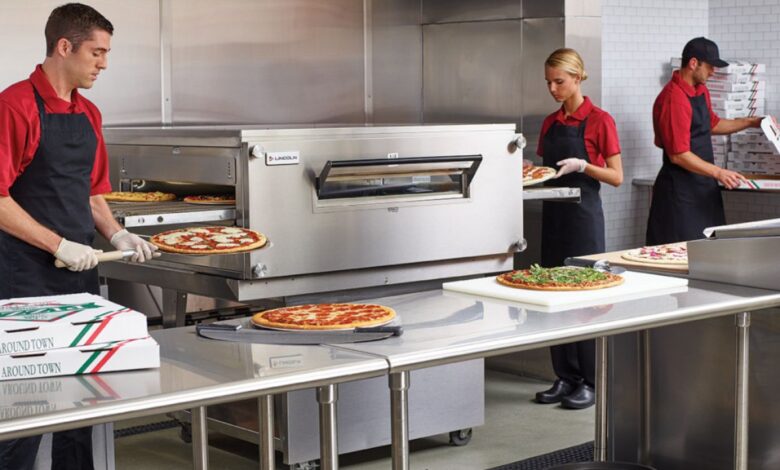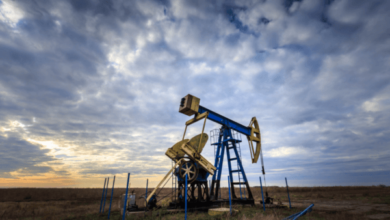How to Maintain and Clean Pizza Oven for Better Performance?

Proper inspection and maintenance on a routine basis should be viewed as an absolute necessity since it guarantees the highest efficiency and life expectancy of a pizza oven. This routine must be done by looking at once the oven for any sign of damage, wear and malfunction such as cracked bricks or worn insulation. Besides, operators need to also verify that the critical components are working properly, for example, heating elements, thermostat and door seals to be able to perform efficiently with Lincoln pizza oven. Such inspections help to detect problems in time and to deal with them rapidly thus causing no downtime and costly repairs.
Cleaning Pizza Oven Interior Surfaces:
The cleaning of the interior surfaces of a pizza oven is vital in providing the oven a clean performance and in preventing the imparted of unwanted flavors to the food by removing food residue, grease buildup and other debris. They should let the oven cool down after which they can get rid of any ash or waste that is left inside with a brush or scraper.
Second, they can apply a damp cloth or sponge in wiping down the inner walls, ceiling, and floor of the oven especially the spots with hard to remove residue. For tougher baked-on grease, staff members may use a mild detergent or oven cleaner designed for high temperatures, while being extra careful in proper usage.
Removing Ash and Debris:
Cleaning ash and debris out of the pizza oven is among the main maintenance operations to that prevent clogging, adequate supply of air, distributed heat. Operator should use a brush or shovel to remove ash and debris carefully once the oven is cooled down. It is important for you to pay attention when handling hot ashes so as not to burn yourself or cause injuries. Air vents, flue, and ash and debris should be cleared once the oven operators remove them. In that case, the oven operators can be able to dispose of them in a proper way and in the clearance of obstructions. Regularly sweeping ash and dirt out helps to avoid airflow restrictions and provide for efficient combustion resulting in more effective operation and consistent cooking outcomes.
Cleaning the Exterior Surfaces:
The undoubtable fact is that not only the exterior surfaces of the pizza oven but also the entire oven need regular cleaning as it prevents both corrosion and premature ageing of the structure. Operators can gently rub the detergents or cleaner with a soft cloth or sponge to clean the exterior surfaces of the oven like the door, handle and control panel. Be very careful not to use strong acidic or abrasive cleaners that can ruin the cover of the oven.
Maintaining Proper Ventilation:
Vents are important for flame stablishment and heat distribution in a pizza oven. Operators need to carry out inspections of the oven’s ventilation system regularly, especially the chimney and the flue where soot can build up or more debris may get lodged. Furthermore, operators must verify if the ventilation system is working, persistently open the damper or flue during operation to be able to have enough airflow. This ventilation is of importance if it prevents smoke accumulation, cuts down carbon monoxide exposure risk and helps to achieve even results. Pizza oven performance and safety can be improved by proper ventilation and it´s maintenance.
Checking and Replacing Heating Elements:
The heating elements that comprise a pizza oven are a vital element of cooking temperature generation and maintenance. Through time, heating elements may loose the original quality or become broken, thus, causing performance problems and an inconsistent cooking. It is advisable that the operators do periodic checks on the heating elements to look for any signs of wear, corrosion or damage such as uneven heating or the formation of hotspots. If any problems are identified while the heating elements are running, operators must immediately replace the affected parts with new ones in order to recover the best performance. Moreover, operators should adhere to the handling instructions from the manufacturer about the frequency of the inspection of the heating elements for uninterrupted operation and to get the expected cooking results always.
Lubricating Moving Parts:
There are many pizza ovens that have moving parts like door hinges, conveyor belts, or rotating racks that need lubrication to run smoothly and to protect against the damage that friction-related wear and tear could cause. Operators should check these moving parts regularly for signs of stiffness, binding or excessive wear and use lubricants where necessary to provide for freeing of these parts. The use of a specific lubricant they use in current harvesting technology that has ability to withstand high temperatures is necessary as well as a lubricant that is compatible with the oven materials. This is to prevent contamination of food or damage to components. Greasants of moving components regularly, the operator can extend the life cycle of their pizza oven and make it work optimally during operation.
Conclusion
Regular professional servicing and tune-ups are key factors in successfully maintaining excellent performance level, reliability and safety of a pizza oven over a long term. Operators need to do routine inspections by the qualified technicians or service providers who are the experts for commercial best kitchen equipment. Service visits give a technician a chance to look into the oven and conduct necessary repair or adjustment to ensure the oven is running efficiently and there are no underlying/escalating issues. Moreover, technicians can make sure that the oven’s temperature controls are correctly calibrated, test its safety features, and provide users with suggestions regarding how to use the device to the utmost benefit of an individual and the environment.


